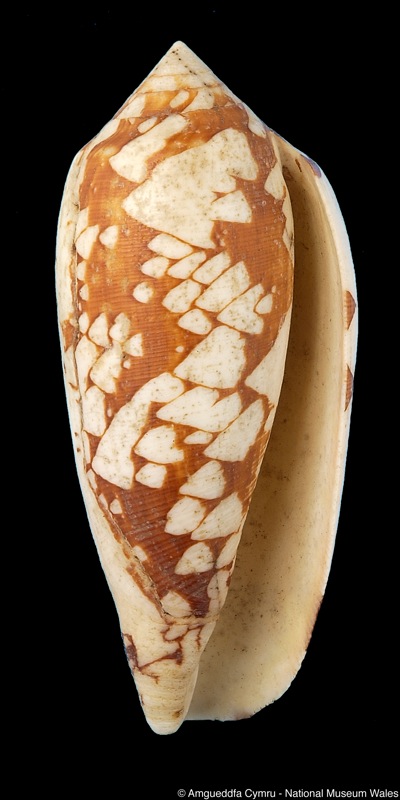 007490 |
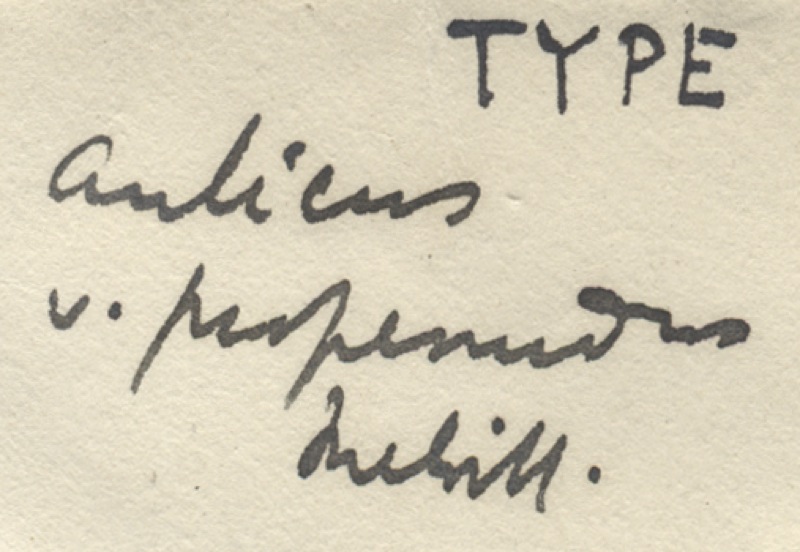 007491 |
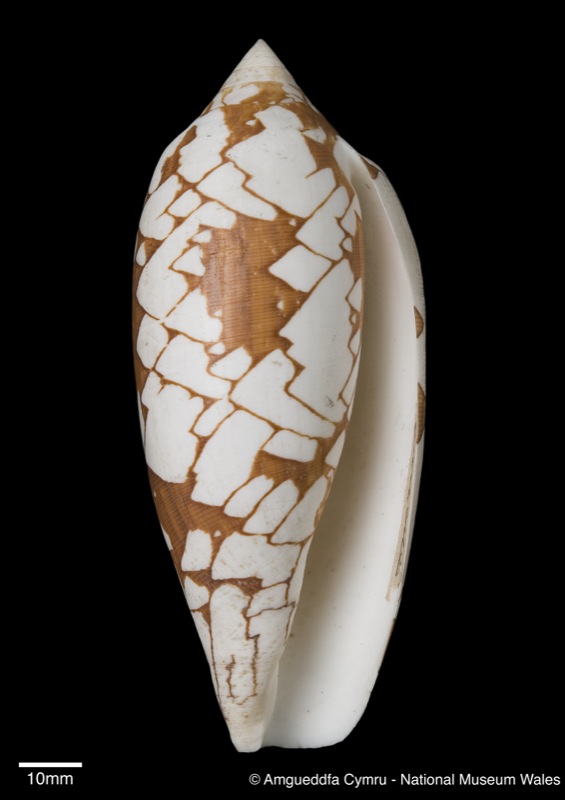 M013914 |
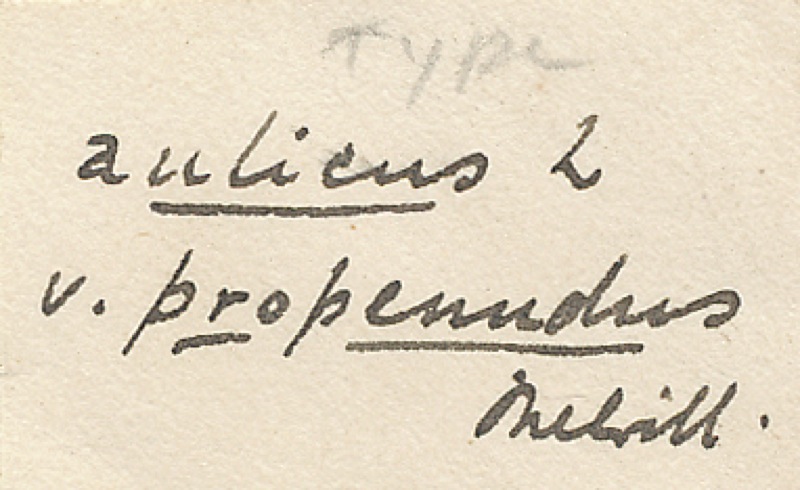 M013221 |
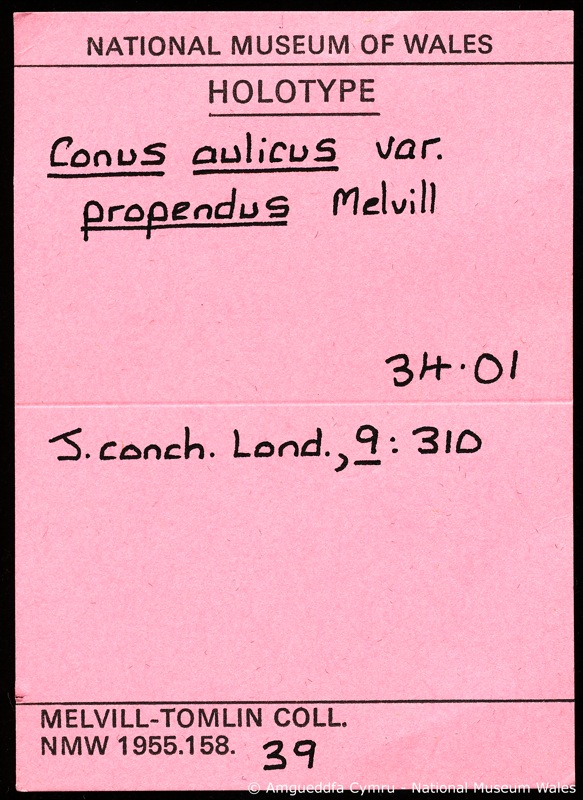 i17028 |
Conus aulicus form propendus Melvill, 1900
Gastropoda : Conoidea : Conidae| Current Name: | Conus aulicus Linnaeus, 1758 [WoRMS: 215471] |
| Type Status: | Syntypes (Holotype?) |
| Collection: | Melvill-Tomlin |
| Accession No.: | NMW.1955.158.00039 |
| Preparations: | Dry shells |
| No. of Specimens: | 2 sh |
| Locality: | No locality. |
| Collecting Details: | (ex.Coll.) J. C. Melvill |
References
Reference |
Citation |
Reference available |
|---|---|---|
| Melvill, J. C. 1900. A revision of the textile cones, with description of C. cholmondeleyi n.sp. Journal of Conchology. 9(10): 303-311; text fig. [310] | Cited Original Description Type Designation |
 request |
| Trew, A. 1987. James Cosmo Melvill's New Molluscan Names. National Museum of Wales, Cardiff. 1-84pp [59] | Cited | |
| Röckel, D., Korn, W., & Kohn, A. J. 1995. Manual of the Living Conidae Vol. 1: Indo-Pacific Region. Verlag Christa Hemmen, Wiesbaden, Germany. 517pp; 84 pls [287] | Cited |  request |
Detailed Locality
| Verbatim Locality |
| Label & Melvill, 1900: No locality given. |
| Point Locality: | No locality. |
| Country: | |
| Station: | |
| Grid ref./Coordinates: |
| Region: | |
| Sea Region: | |
| Altitude: | |
| Depth: |
| Expedition: | |
| Ex. Collection: | J. C. Melvill |
| Collecting date: | |
| Collected by: |
Classification
Kingdom |
Phylum |
Class |
Order |
Superfamily |
Family |
|---|---|---|---|---|---|
| Animalia | Mollusca | Gastropoda
Subclass: Prosobranchia |
Neogastropoda | Conoidea | Conidae |
Remarks
There is some confusion with the status of this lot. In the collection there was a single specimen (8.8cm) labelled as a holotype by my predecessor with an associated Melvill ‘type’ label for this variety. Next to this specimen there was a larger shell (11.6cm) with ‘aulicus’ written on it by Melvill and another Melvill ‘type’ label stating aulicus v. propendus (’type’ is written in pencil). This second specimen had not been databased or remarked on but it does have the bare white tract of v. propendus as described by Melvill.
Melvill’s original description does not suggest that a single specimen was used and does not figure this variety so I can only conclude that the specimens are of equal status and represent a syntype series. The smaller specimen has however been cited as a holotype in Röckel et al (1995).
